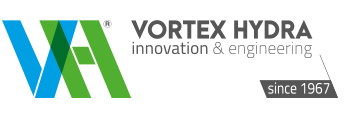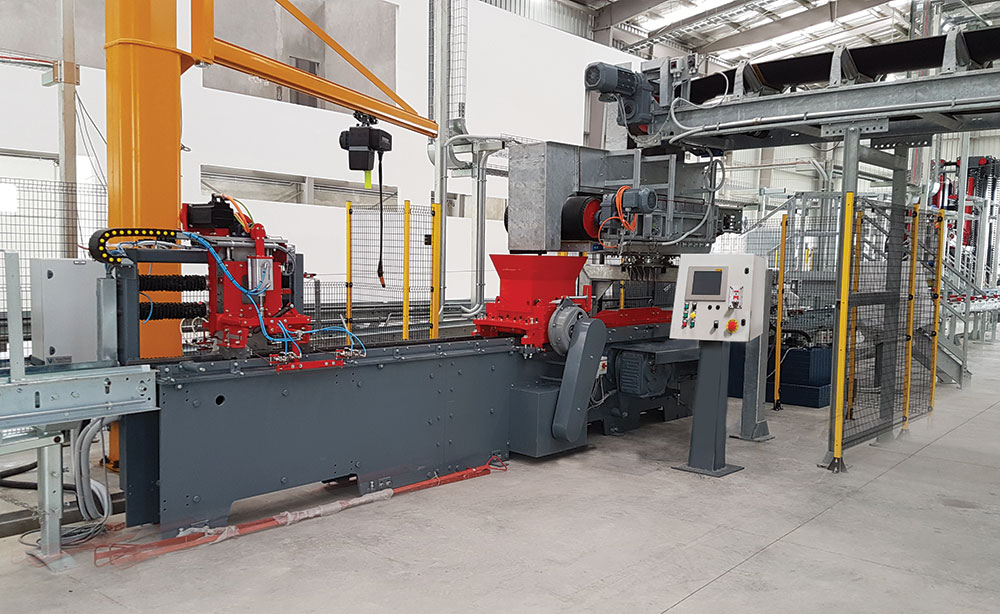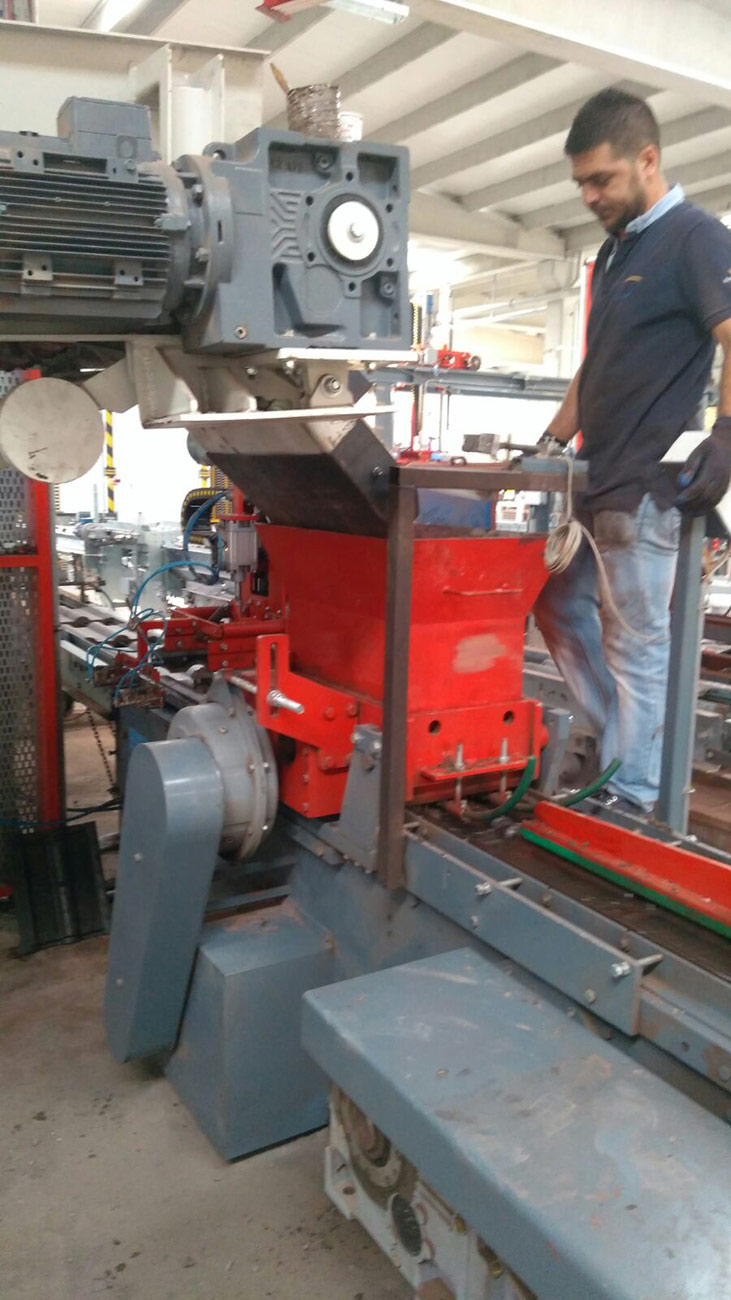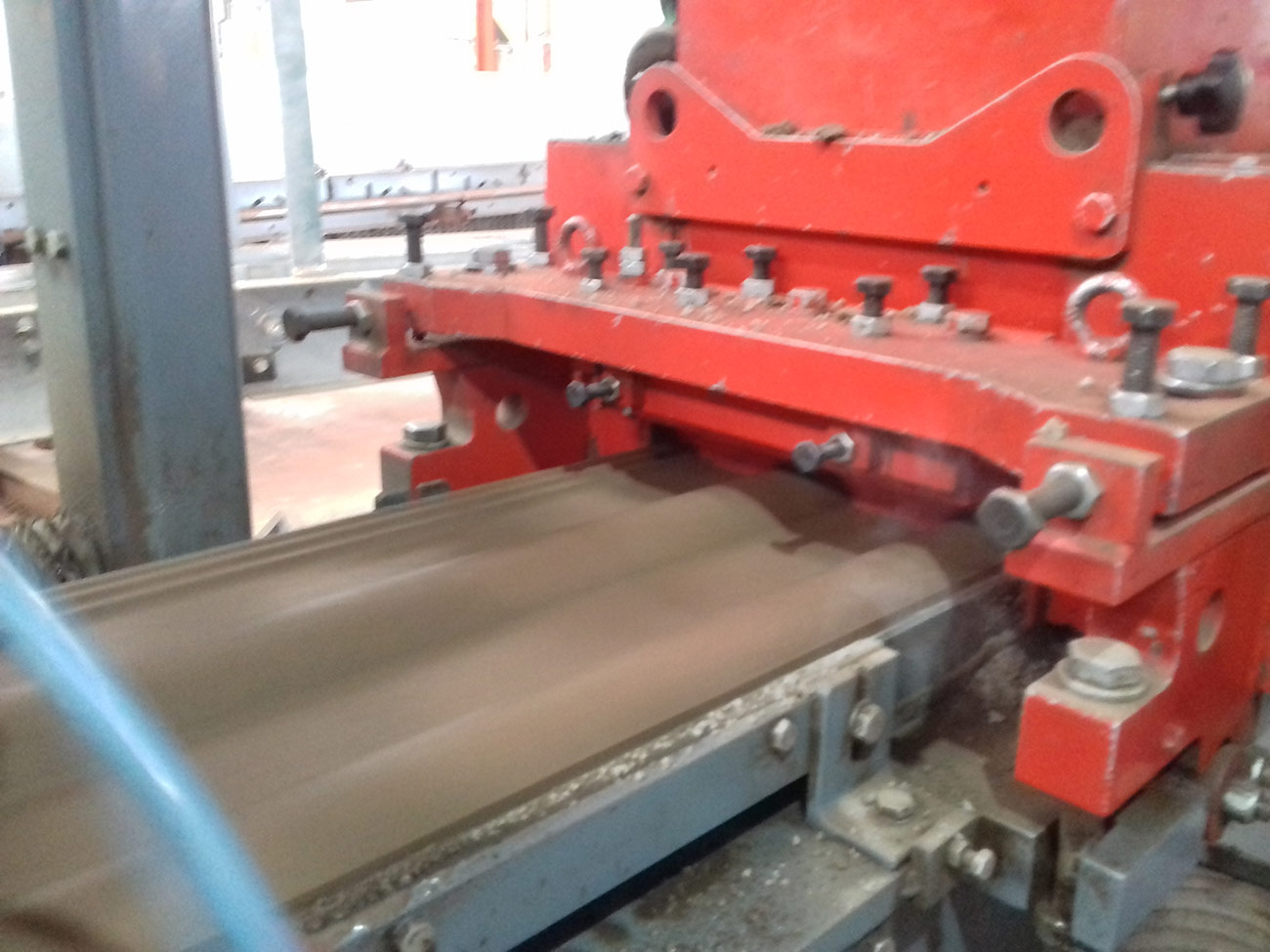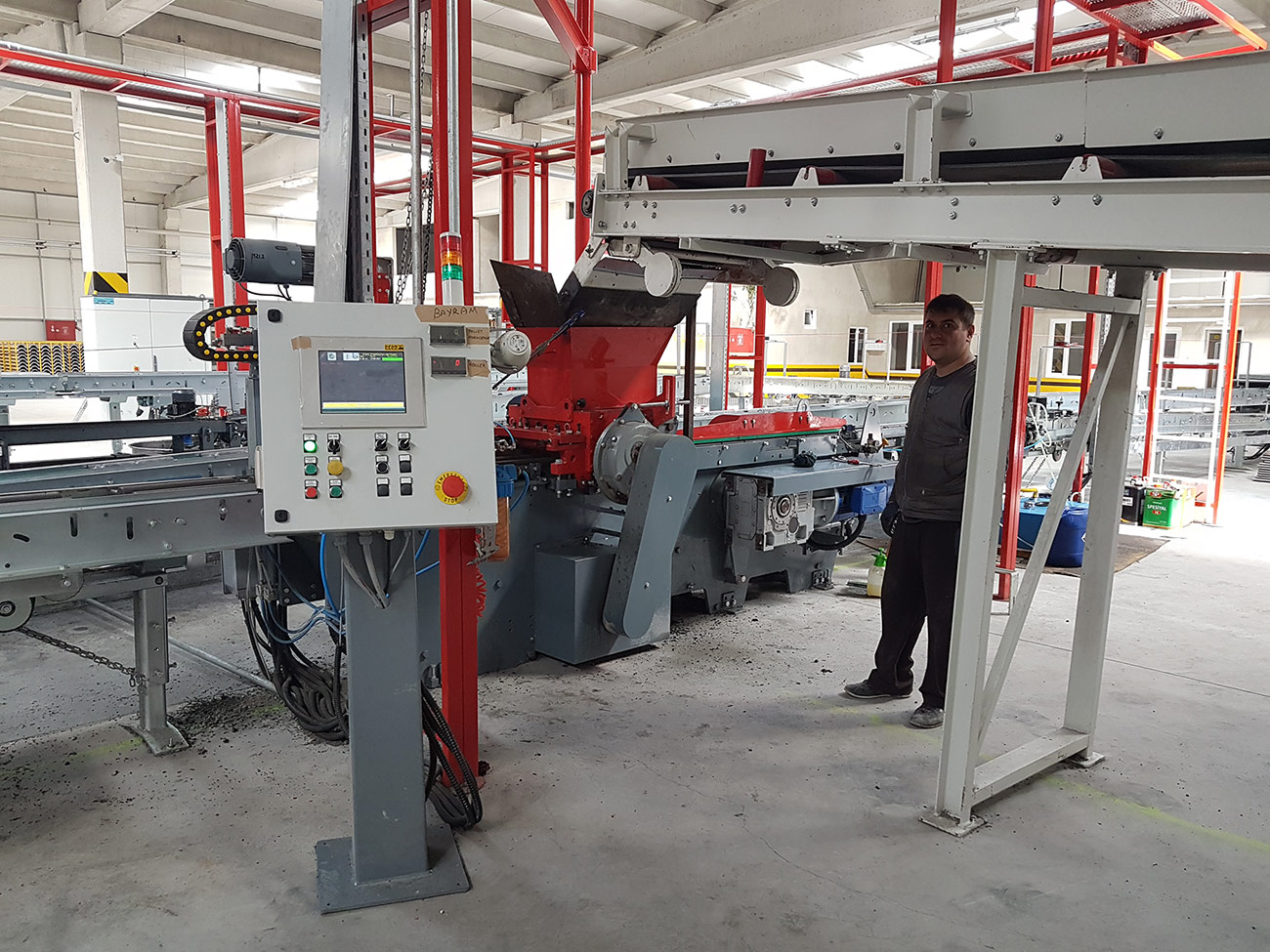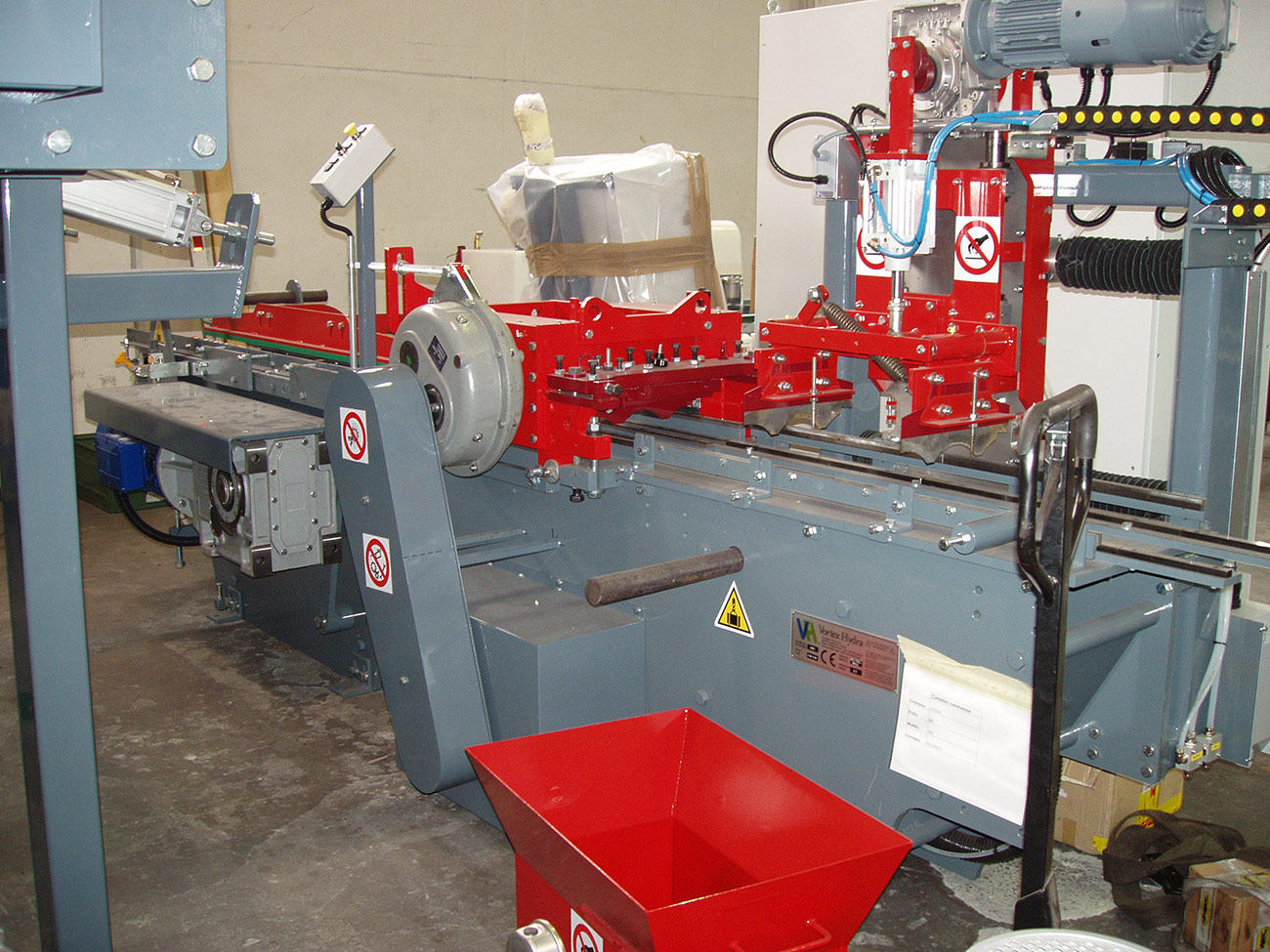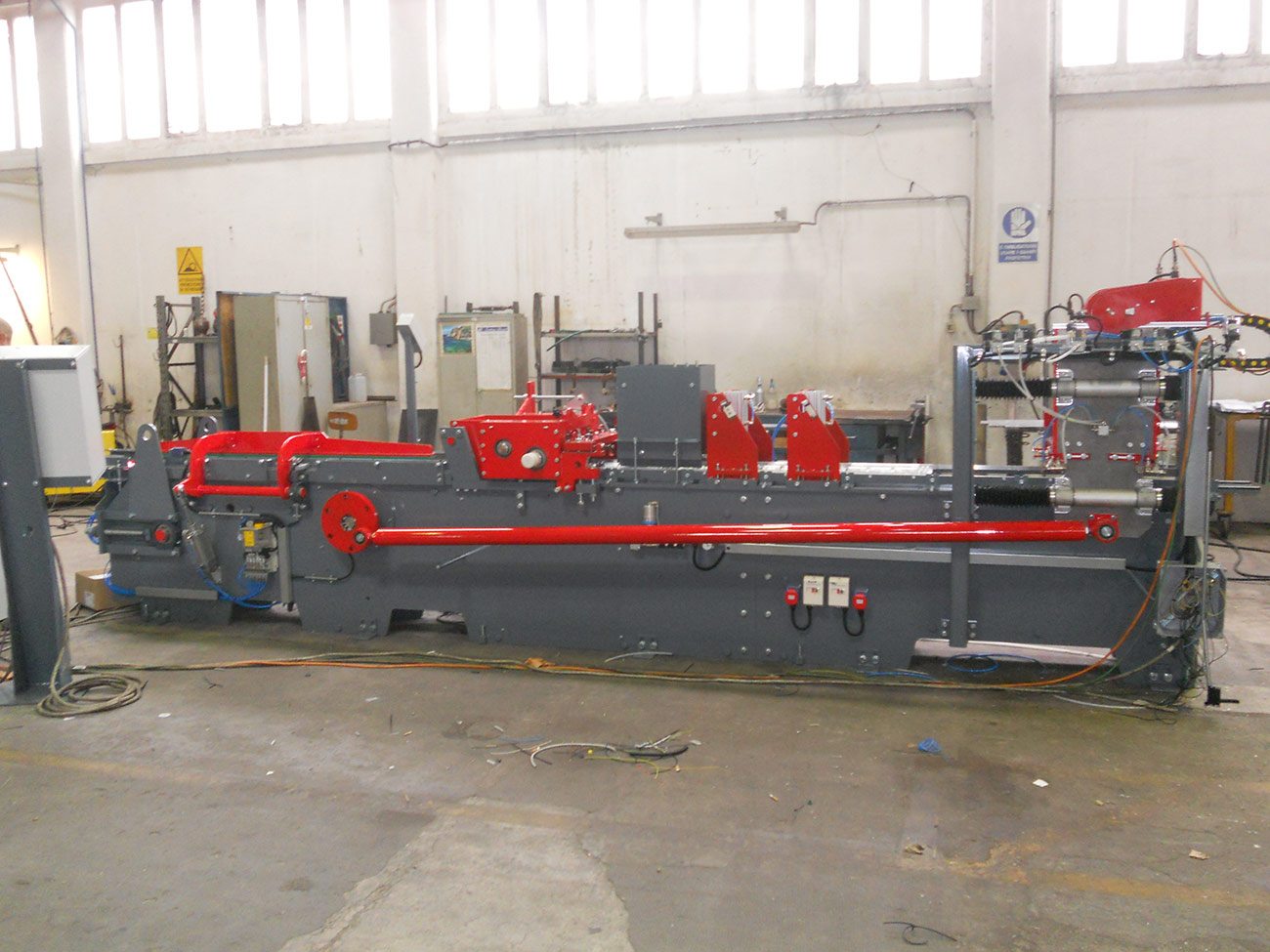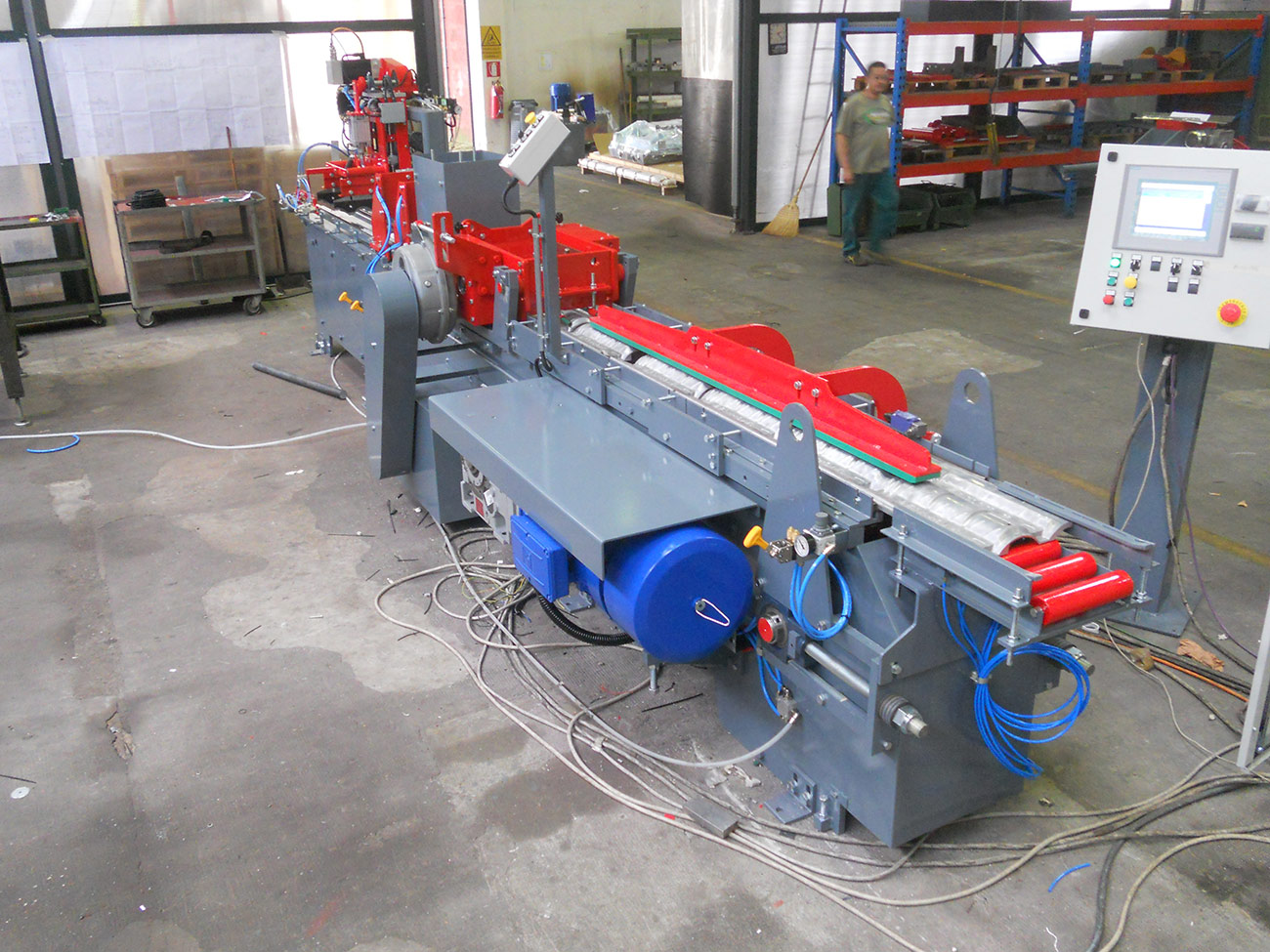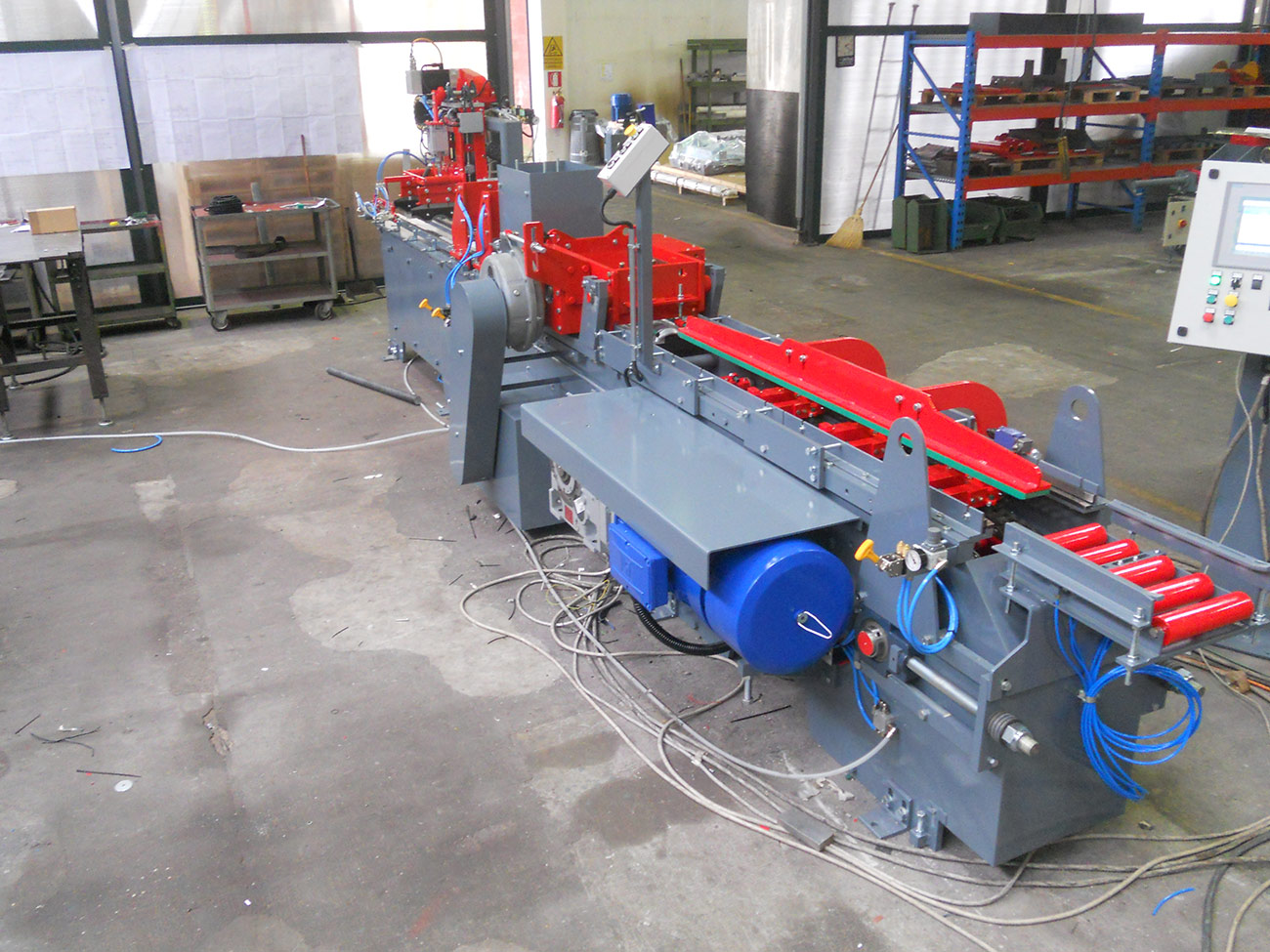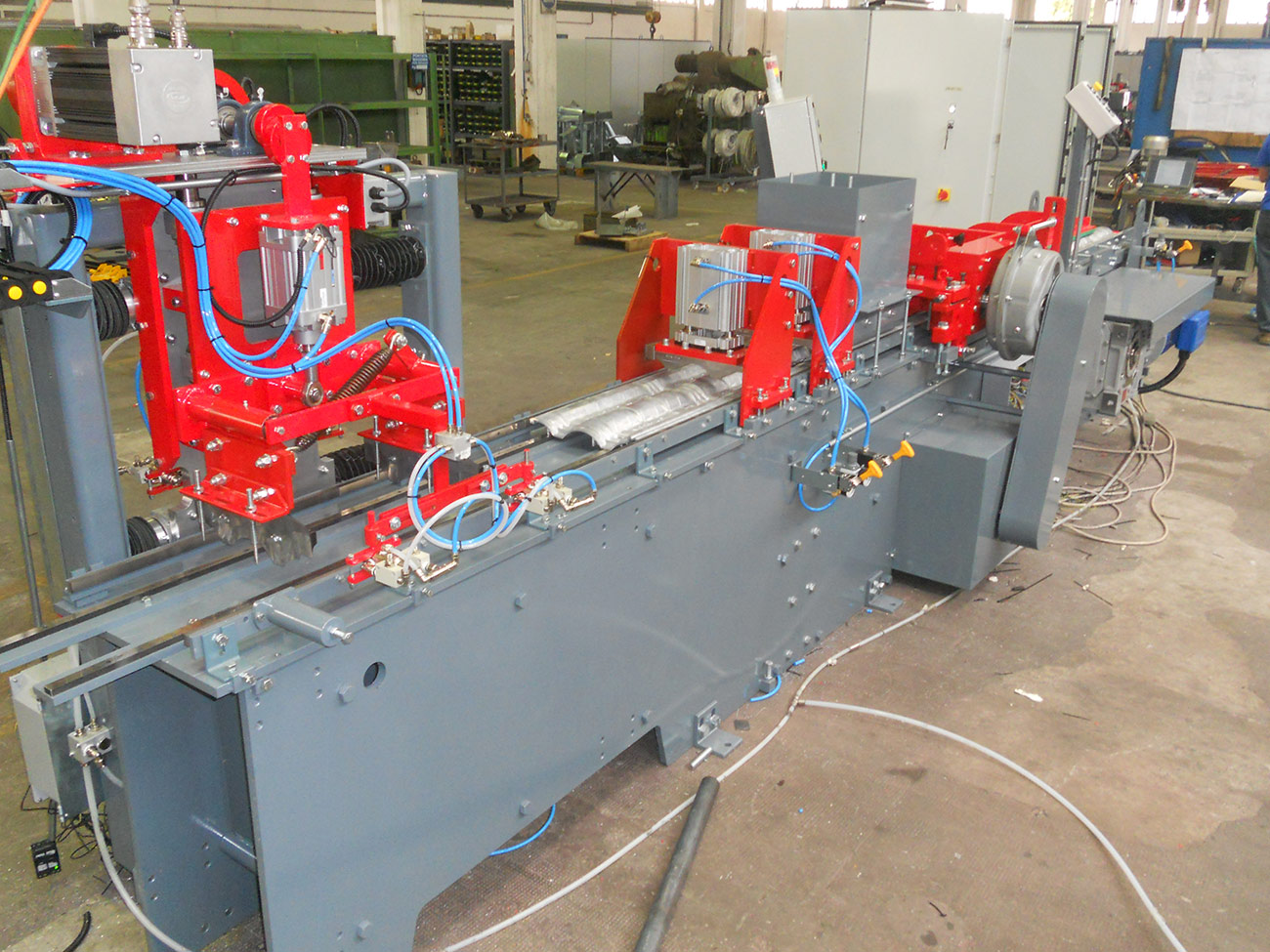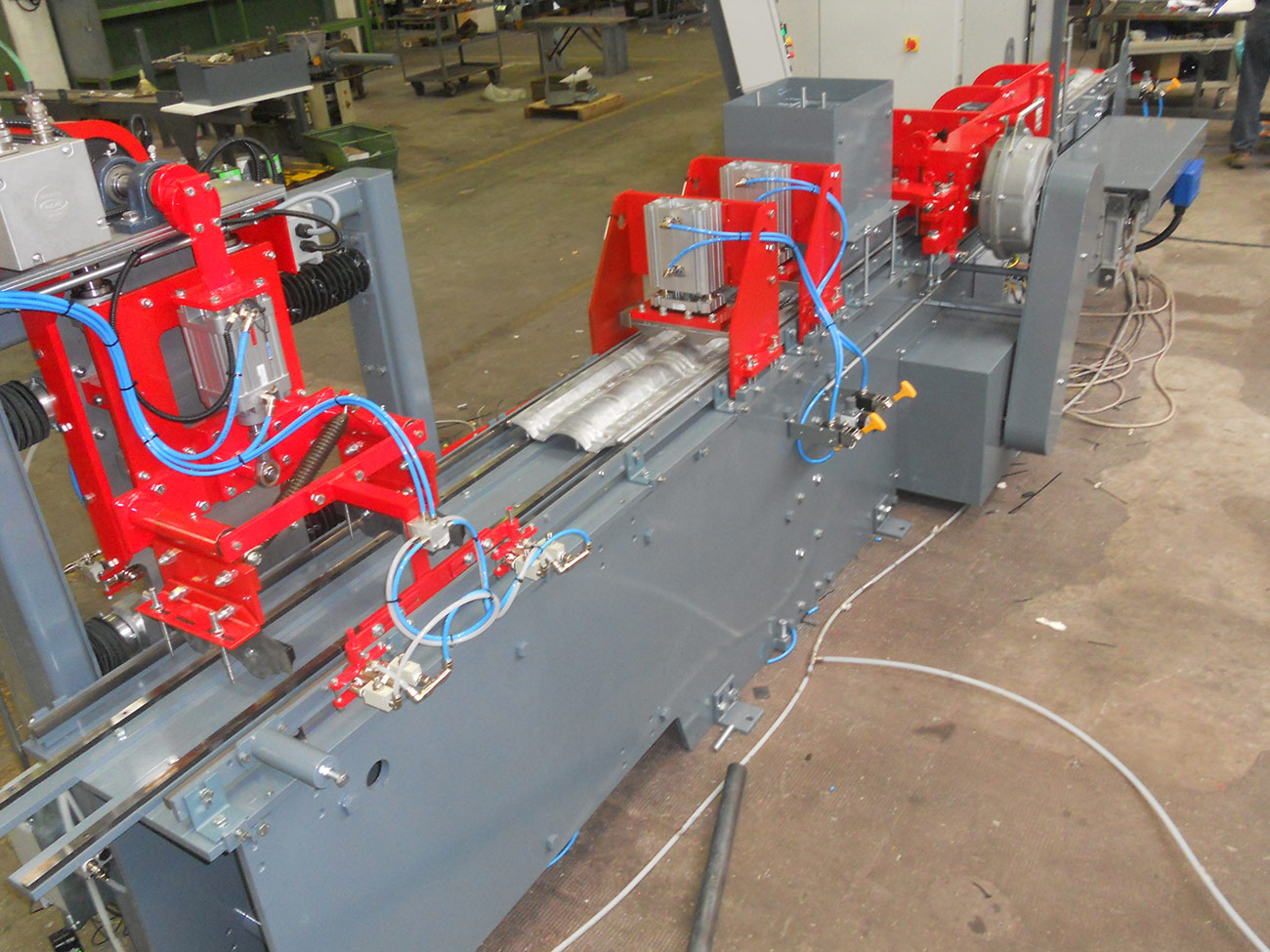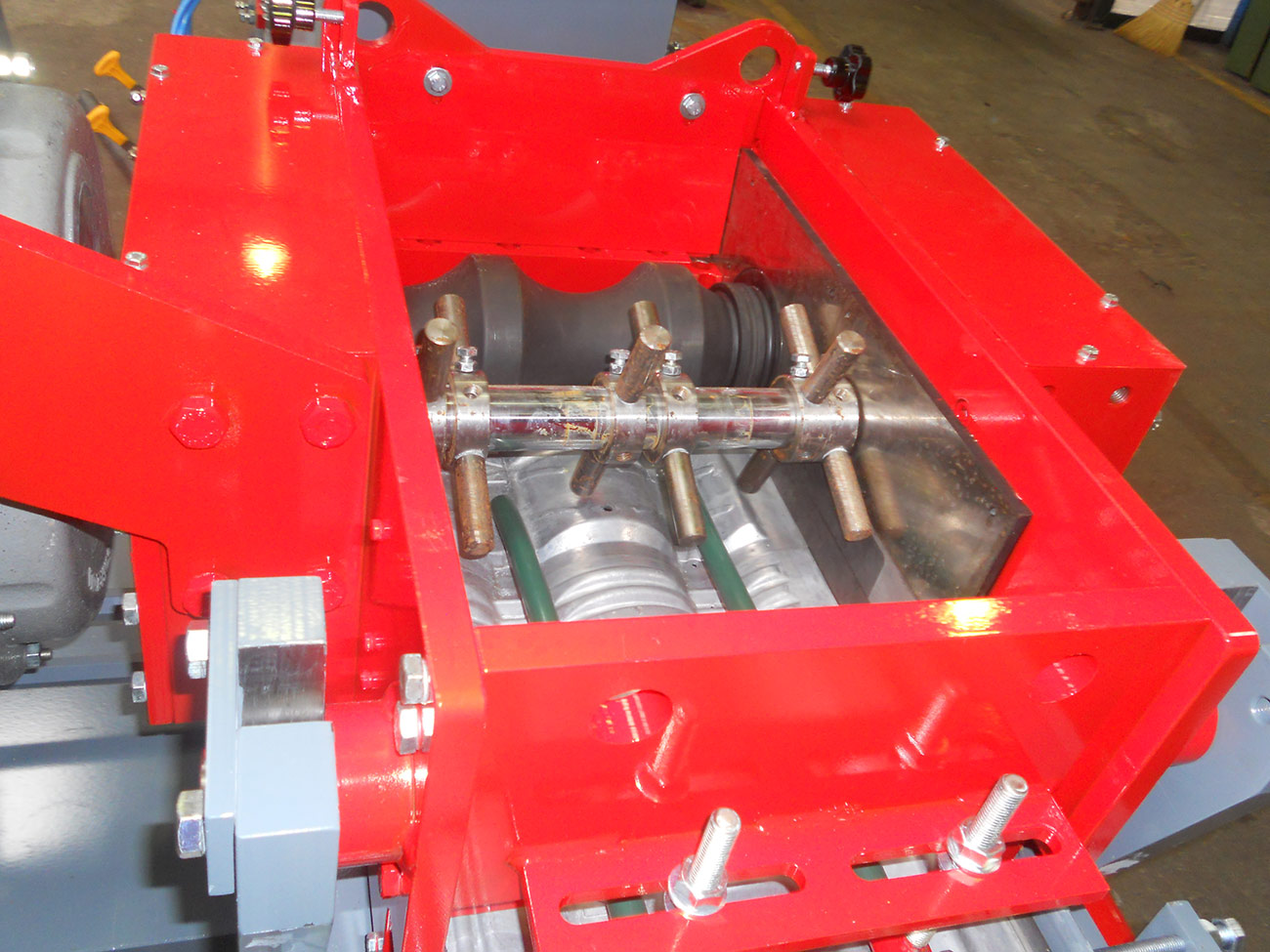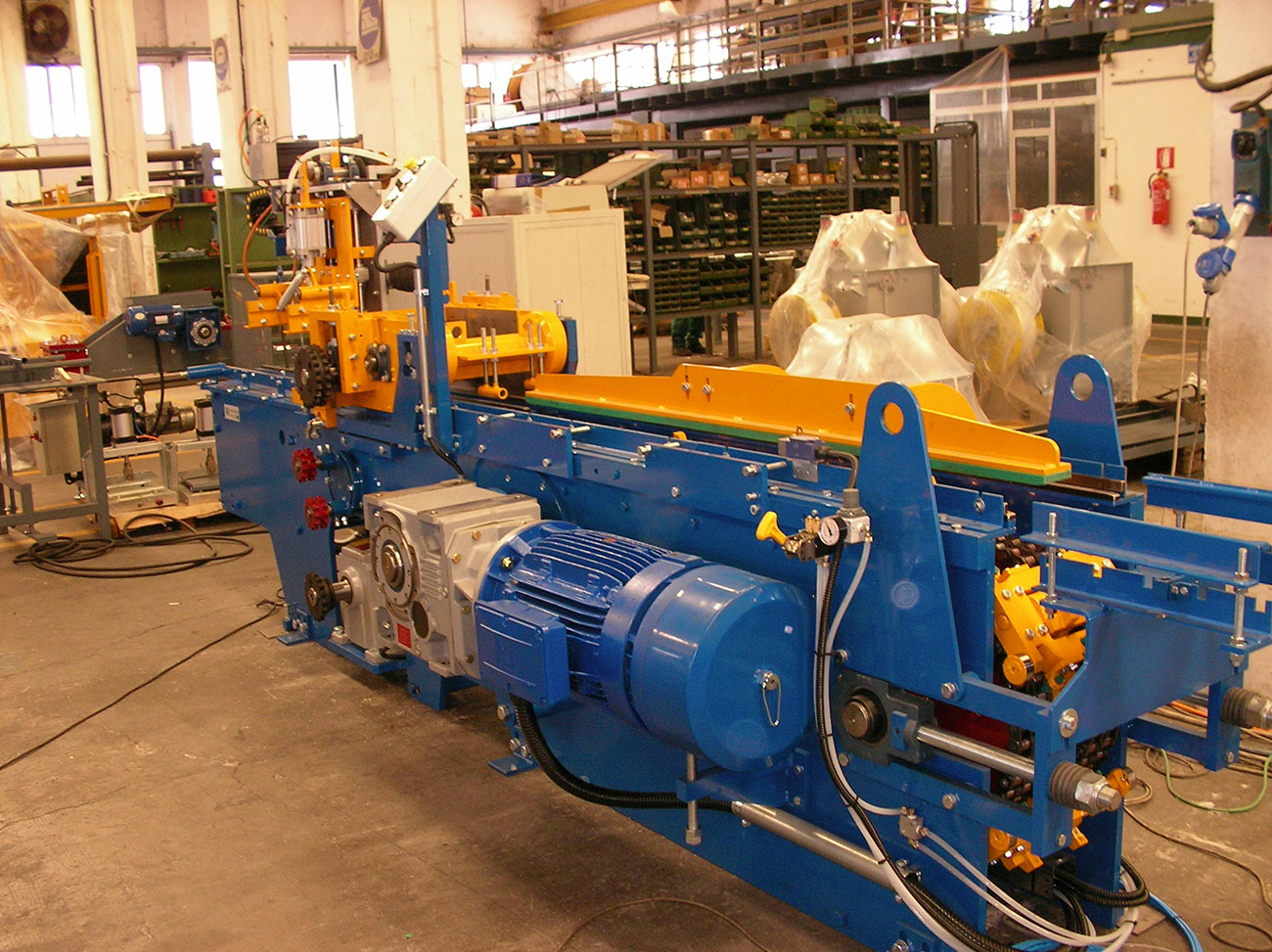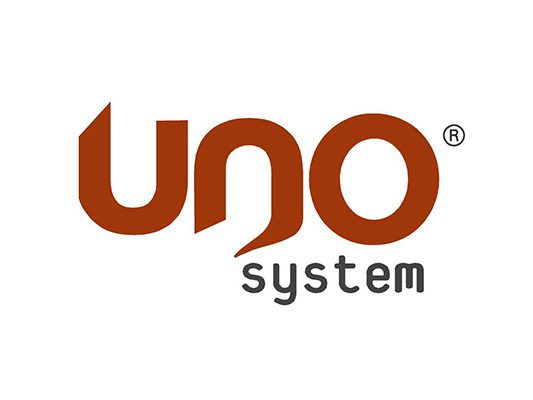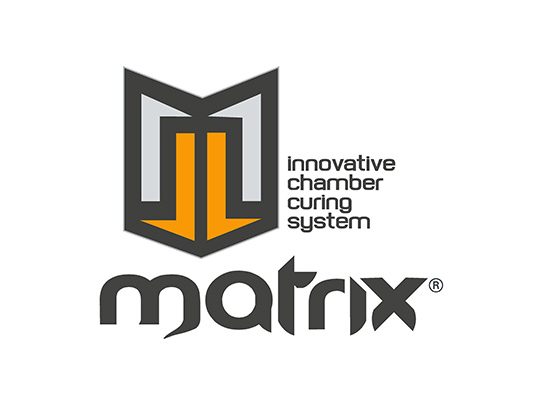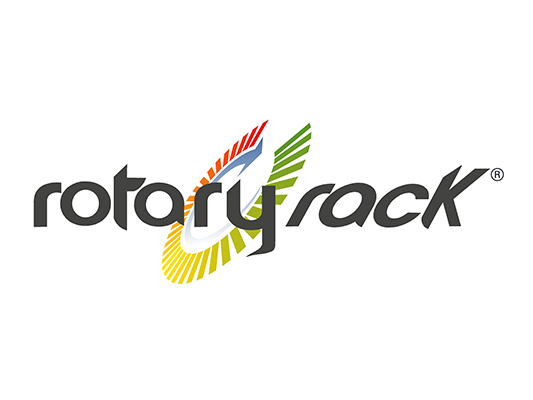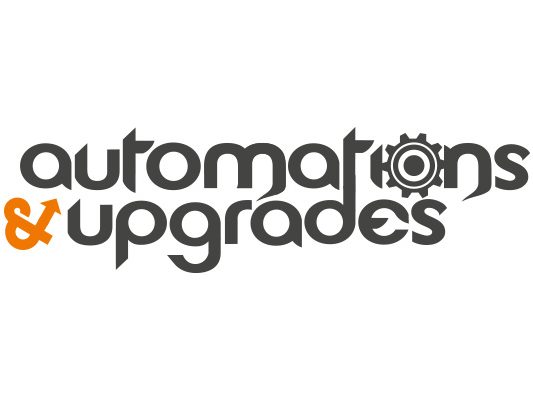VORTEX MODULO
VORTEX MODULO is a roof tile manufacturing plant that have been designed on a ‘modular’ basis to enable a customer to easily upgrade the capacity of his plant to suit growing market demands.
At the heart of the VORTEX MODULO production line is a continuous action extrusion machine that has been specifically designed to combine latest technology, efficiency, strength and ease of operation.
The extruder has two electrical motor units, one to drive the aluminum pallets through the machine and the other to drive the gearbox mounted on the tile forming extrusion head. The drive system consists of pallet underside pusher units mounted on a heavy-duty continuous chain. The extrusion machine is also equipped with an automatic precision ‘flying’ tile cutting system that is synchronized with the pallet drive system.
The VORTEX MODULO production line also incorporates an automatic tile racker/deracker machine and when required automatic tile packaging/timber palletizing machinery. It can also operate with an automatic curing system such a ROTARY or a MATRIX.
MODULO 60
This MODULO system is roof tile plant that has an operational speed up to 60 tiles per minute. It is designed to produce interlocking coloured concrete roof tiles (420 x 330 x approximately 12 mm thick according to the international standards). It is also possible to produce concrete ridge tiles in this plant.
The fresh concrete is prepared in an automatic batching and mixing plant having a 750 litre yield capacity.
The tiles are formed on the top surface of precision diecast aluminum pallets by an extrusionpressure process.
The extrusion machine incorporates a continuous action chain mechanism that drives the pallets through the extrusion machine that is also equipped with an automatic ‘double-flying’ cutter unit fitted with twin knife blades to enable the new tile to be accurately cut to the correct length.
Loading and unloading of the newly formed wet roof tiles in and out of the steel curing racks, can be done manually or by an automatic operation undertaken by a racker/deracker machine. This machine automatically elevates and the pushes wet tiles and their supporting aluminum pallets into an empty compartment of a steel curing rack until it becomes full. The full rack is then transferred to a warm curing chamber. When the tiles are cured the steel rack is returned and loaded into the de-racking side of the machine. The cured tiles and supporting aluminum pallets are then automatically pushed out of the respective compartment into a descender mechanism that will lay one row of tiles a time onto an outgoing conveyor. Controls for the racker/deracker machine are through a PLC.
Cured tiles and supporting aluminum pallets are travelled through an automatic depalleter machine whereupon they are separated.
The empty aluminum pallets are conveyed back to the tile extrusion machine via a turntable unit and prior to entering the machine pass through an oiler unit that sprays approximately 8 gramme of release oil onto the top surface of each pallet as it passes.
If required, the separated dry tiles are then painted on their top surface followed by either manual or automatic packing operation to suit a customer’s preference. When automatic packing machinery is used a PLC unit controls the stacking, pack forming, strapping and timber pallet loading of bundled finished tiles.
A long transport line (or a dryng system) can be incorporated into the production system to enable the acrylic paint on the tile surface to dry prior to being packed. Heavy duty service conveyors will be used for the movement of both roof tile and aluminum pallets.
MAXIMUM OUTPUT
60 tiles/minute
MINIMUM BUILDING SIZE
30 m x 50 m x 3,5 m high
INSTALLED POWER
~ 130 kW (mixer included)
PRODUCTION
24.000 tiles per shift
MODULO 120
The roof tile manufacturing process is basically the same as that of the VORTEX MODULO 60 plant with exception that all the plant and equipment has been designed and quantified to operate at a speed of up to 120 tiles per minute.
Again, the roof tiles are formed on precision cast aluminum pallets that are chain driven through an extrusion machine. After the newly formed wet tiles and supporting aluminum pallet exit the extrusion head on the machine the tiles are cut to their correct length by a ‘double-flying’ cutter unit that is operated by a servo motor. The unit has a crank connection that is directly synchronised to the pallet drive mechanism to ensure precision cutting of the tiles.
Both the chain drive in the machine and the tooling in the extrusion head are driven by two separate electric self-braking motors. These motor units are controlled by invertors to enable fine tuning of both the pallet advancement through the extrusion machine and the rotation of the forming roller in the extrusion head.
Heavy duty conveyor systems are employed within the plant for the travelling and handling of tiles and aluminum pallets.
An automatic racker/deracker machine is employed for loading the wet tiles in and out of the steel curing racks. The loaded racks are transported to and from the curing chambers by a forklift truck or the like. They are stacked two high in the chamber to reduce the curing area needed. Each rack has a a 390-tiles capacity. A curing chamber requires a temperature of a least 30°C to enable the wet tiles to cure over a 24-hour period or 55/60°C temperature with humidity of 95% when only an 8-hour curing period is required. Depending on local conditions it might be necessary to install a heating system when these temperatures cannot be achieved naturally.
When curing is completed the dry tile and supporting aluminum pallet are conveyed through an automatic depalleter machine for separation.
Like the MODULO 60 operation the empty aluminum pallets are conveyed back to the tile extrusion machine, via a turntable and oiler unit for re-use while the separated dry tiles are travelled to the automatic packer machine. If required, the top surface of the tile can be painted en-route to the packer. When surface painting is required a long transport conveyor is added to the system that enables the acrylic paint to dry before the tile enters the packing machinery.
MAXIMUM OUTPUT
120 tiles/minute
MINIMUM BUILDING SIZE
26 m x 90 m x 8 m high
INSTALLED POWER
~ 150 kW (mixer included)
PRODUCTION
49.000 tiles per shift
